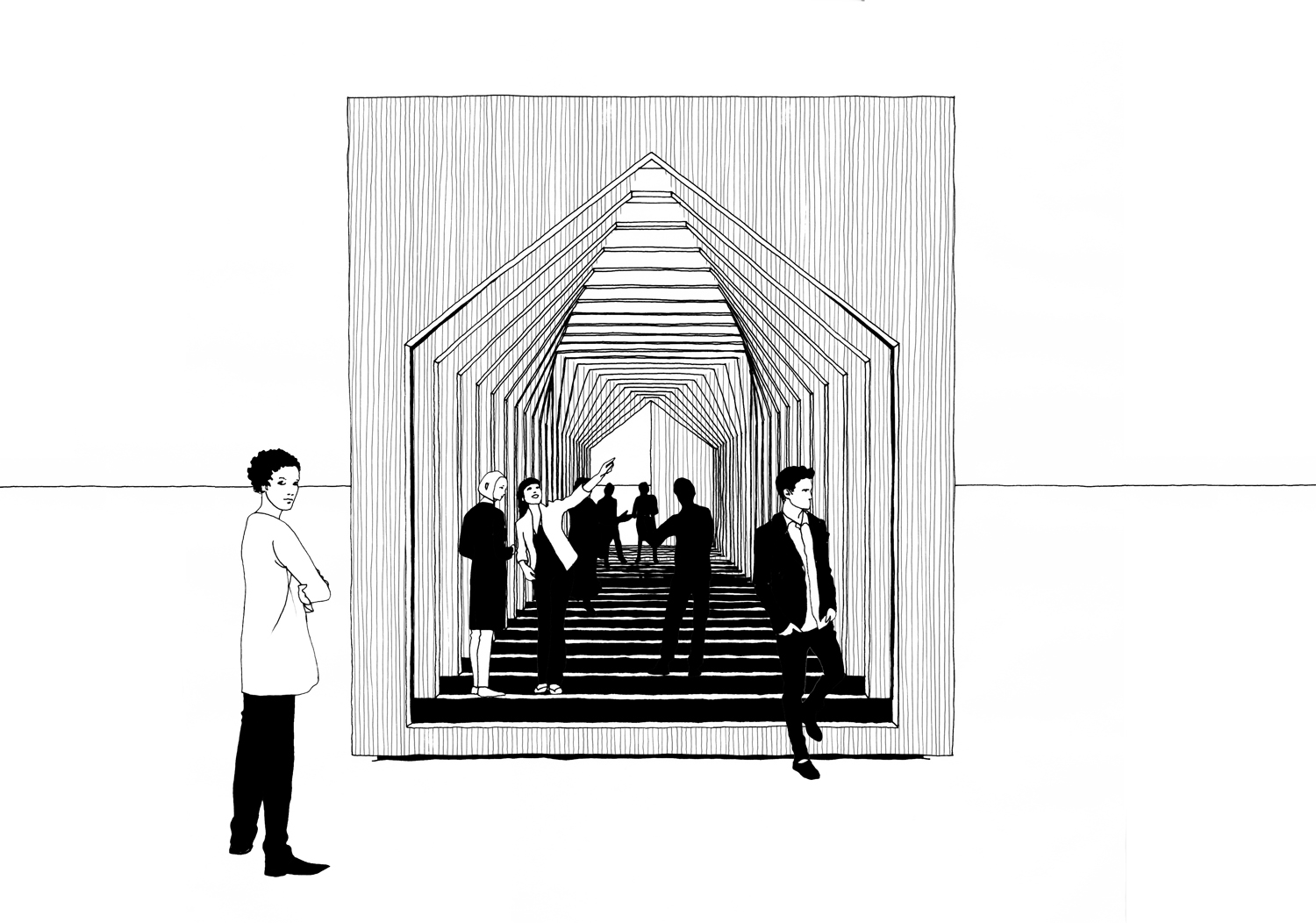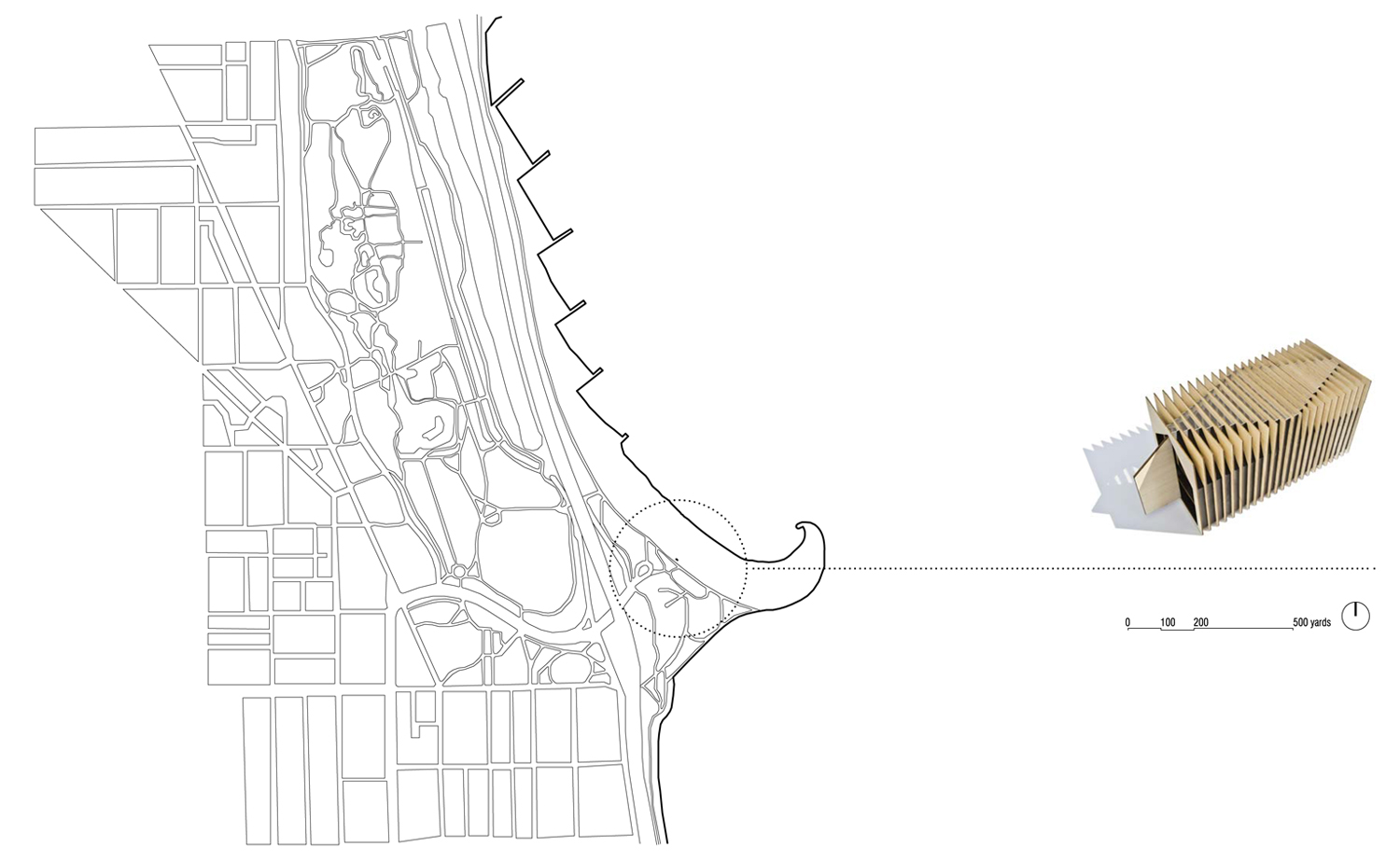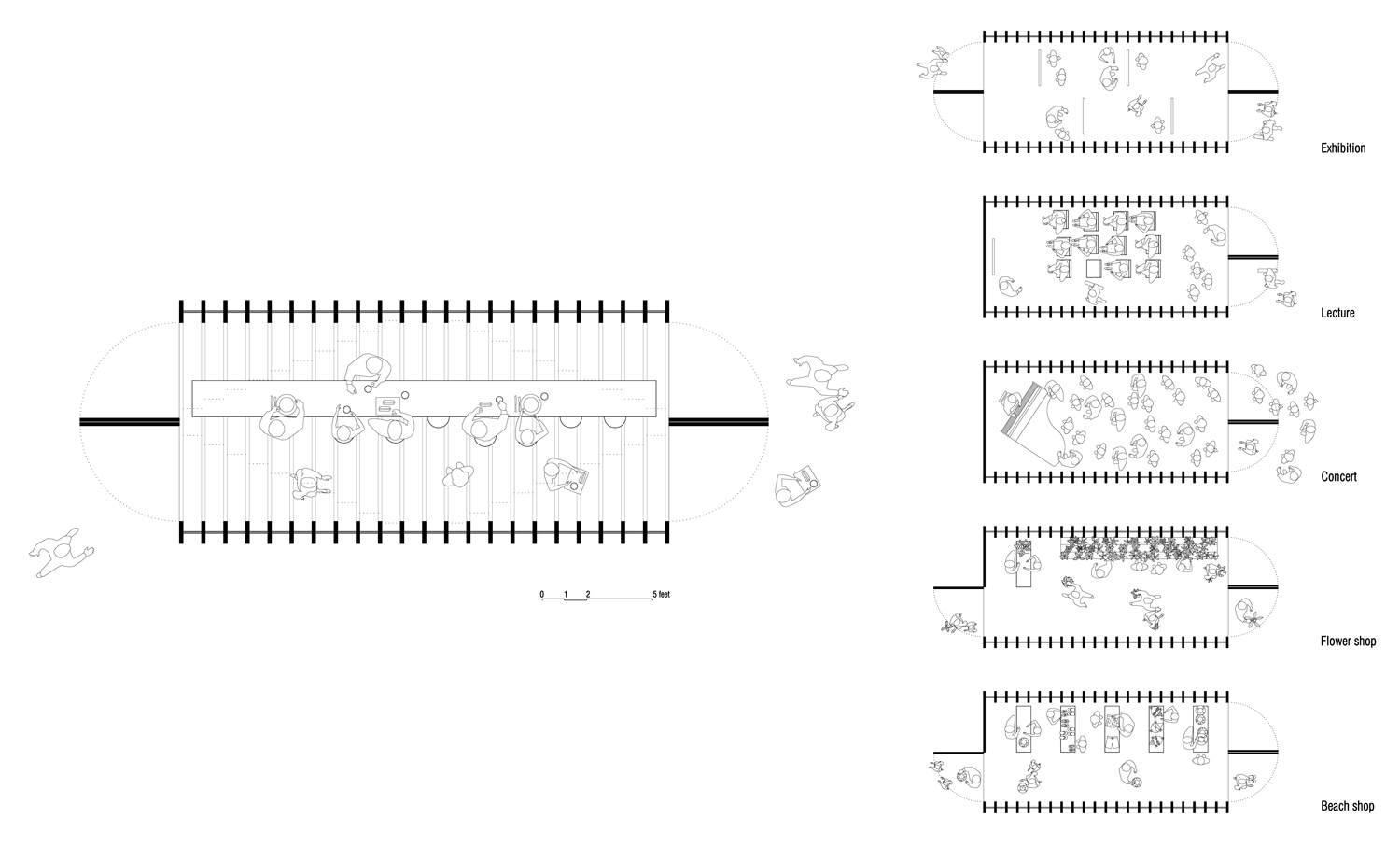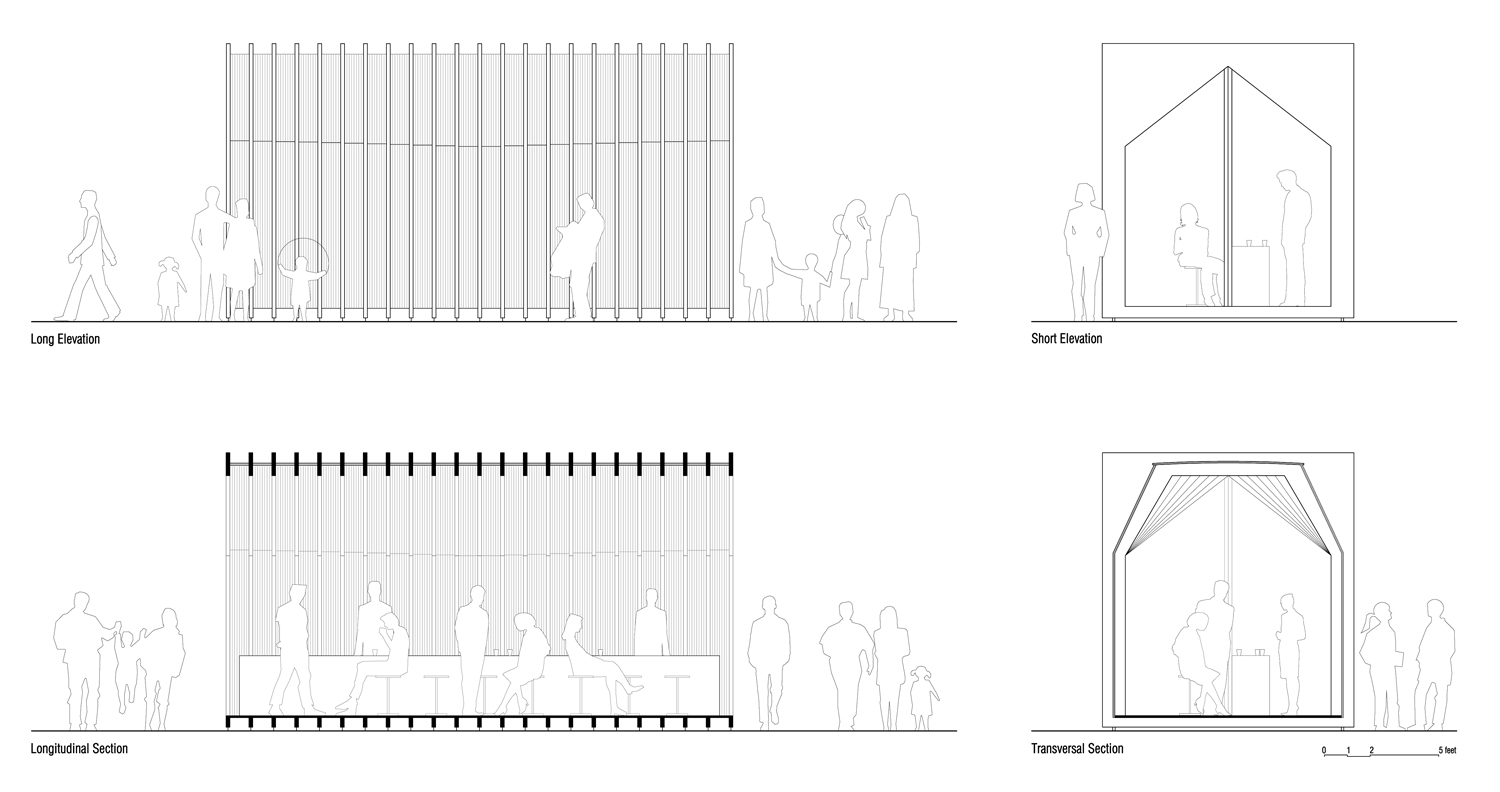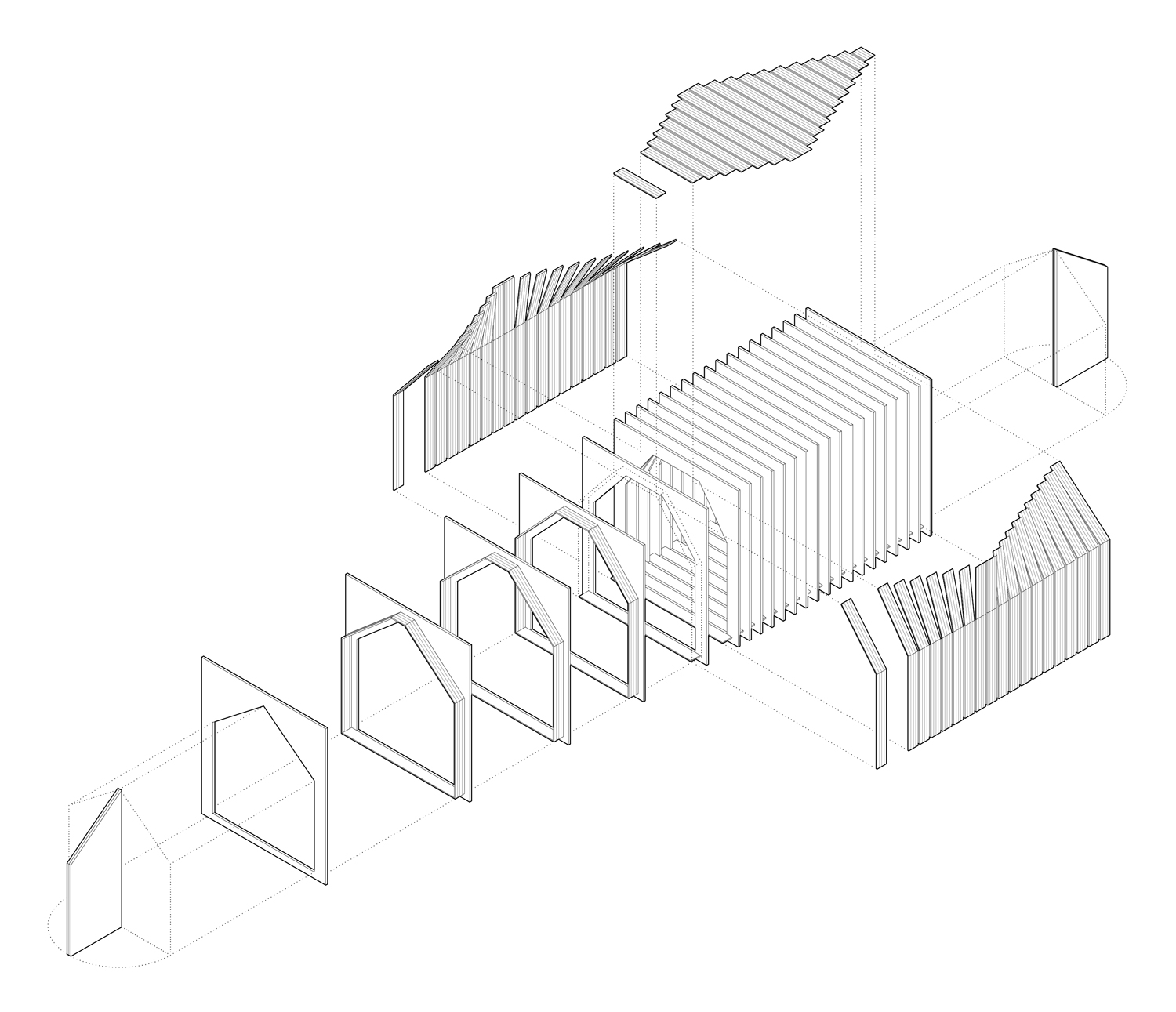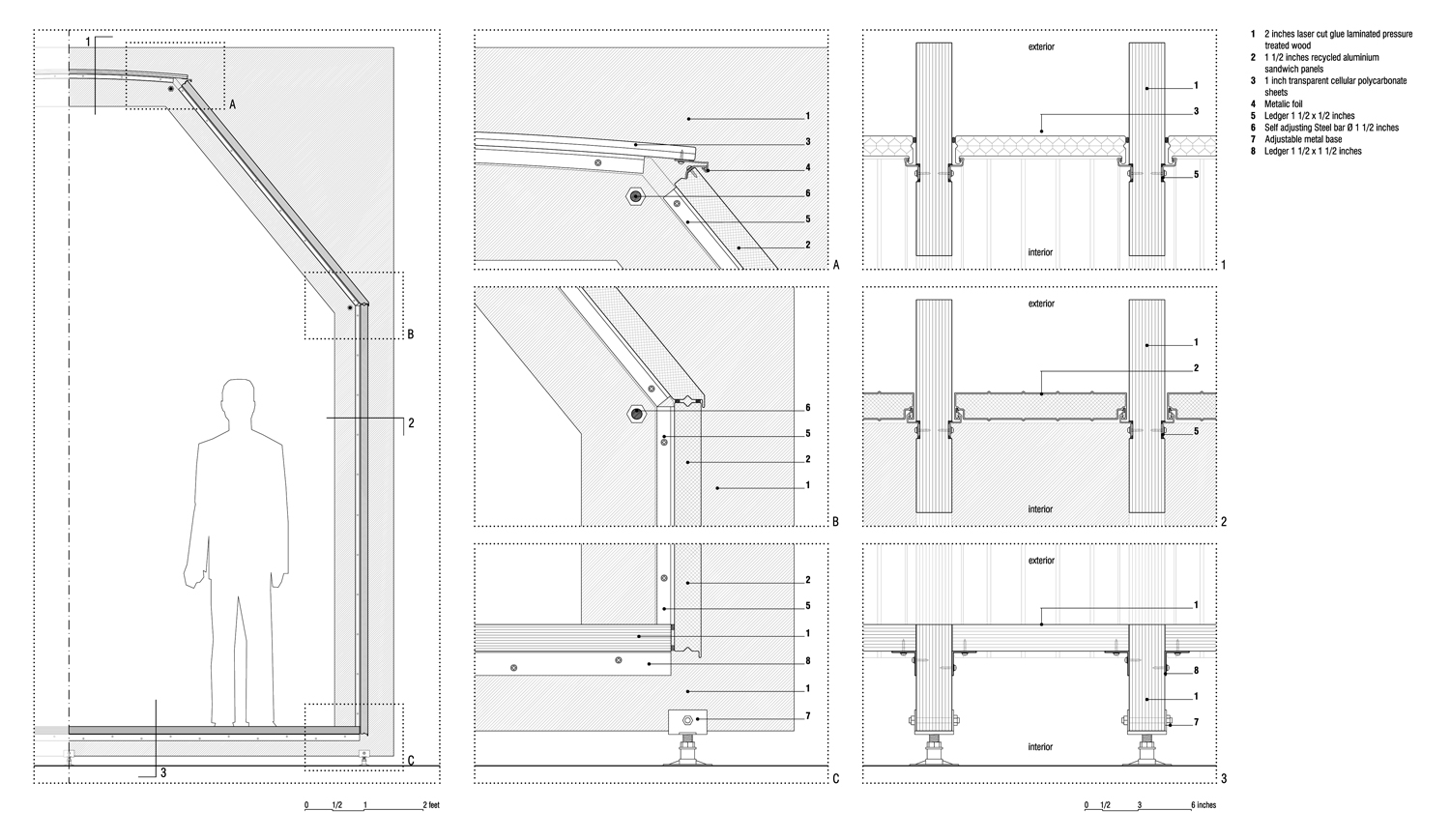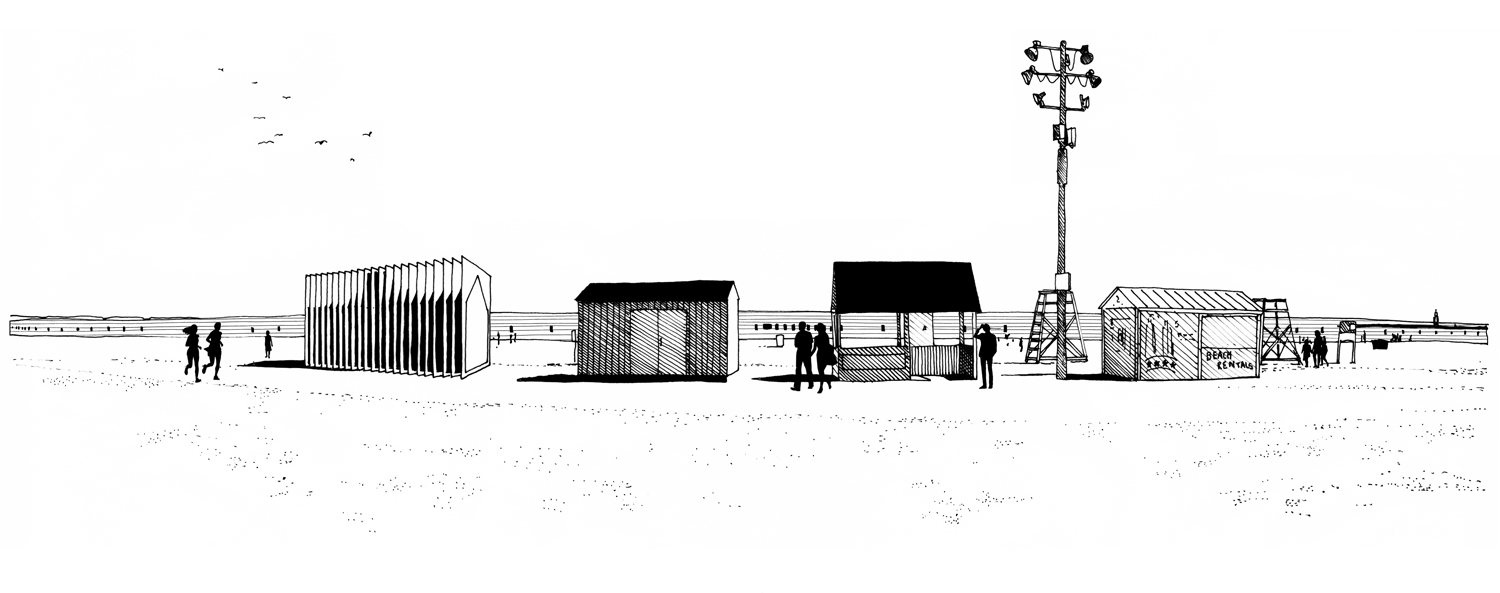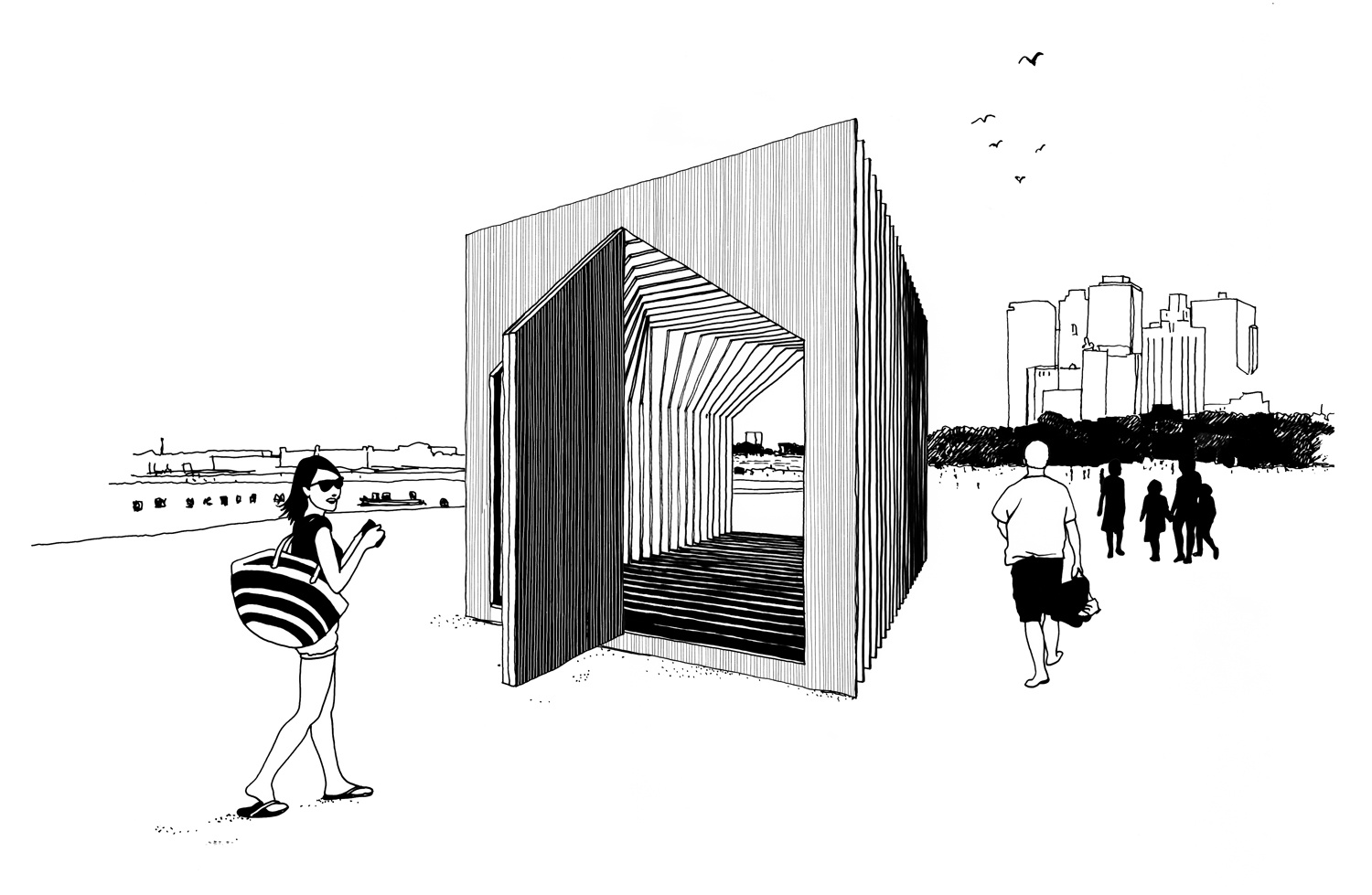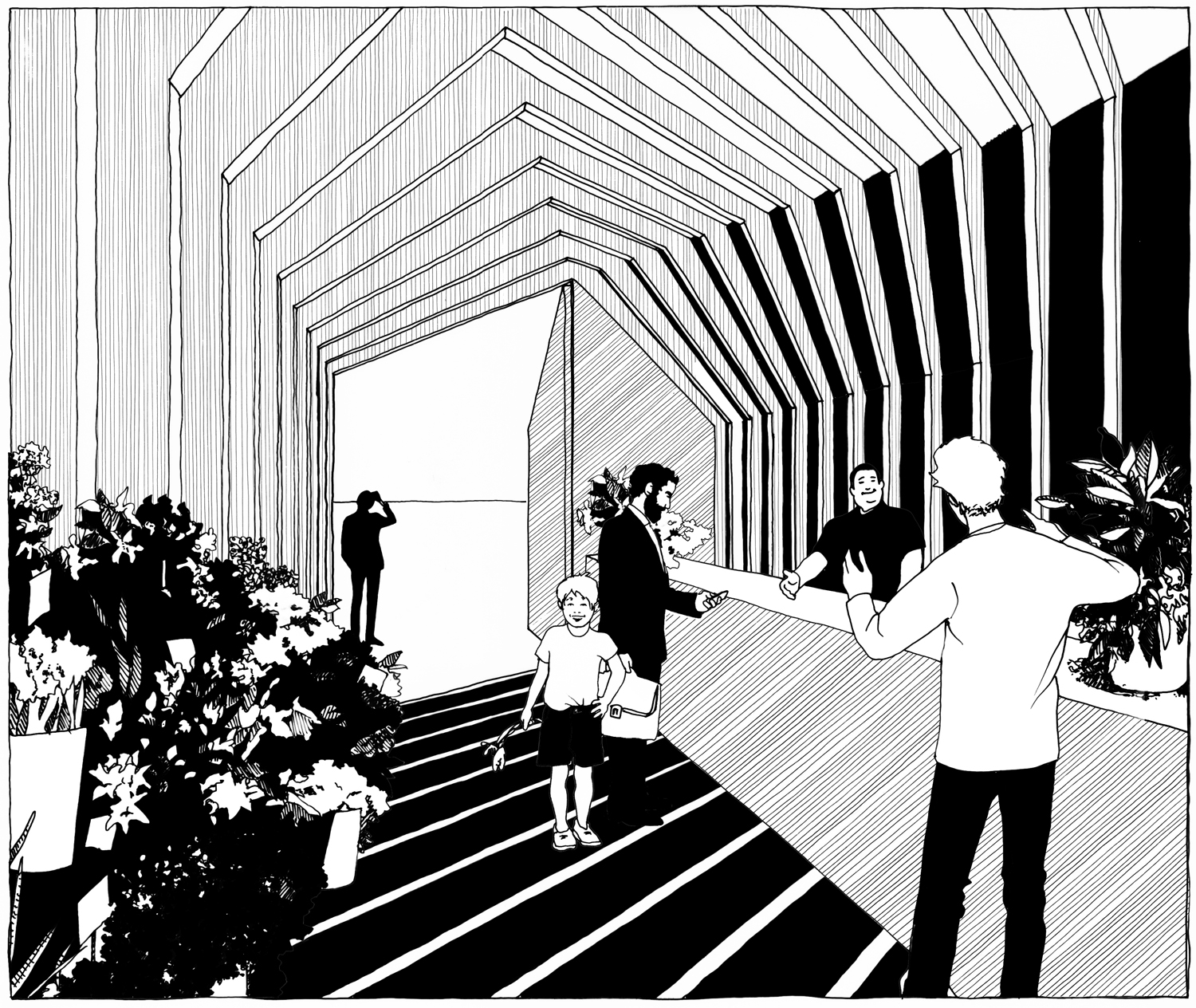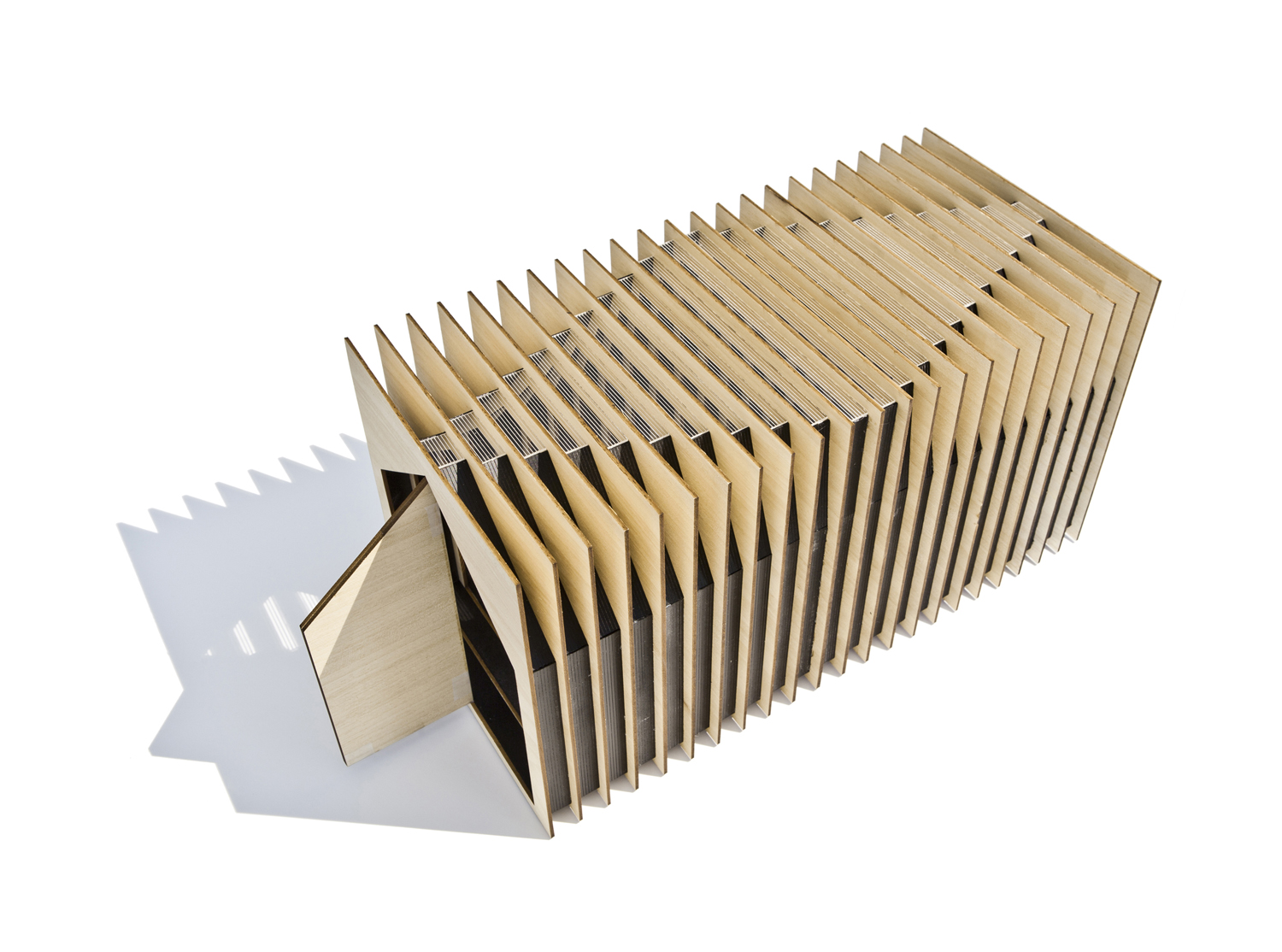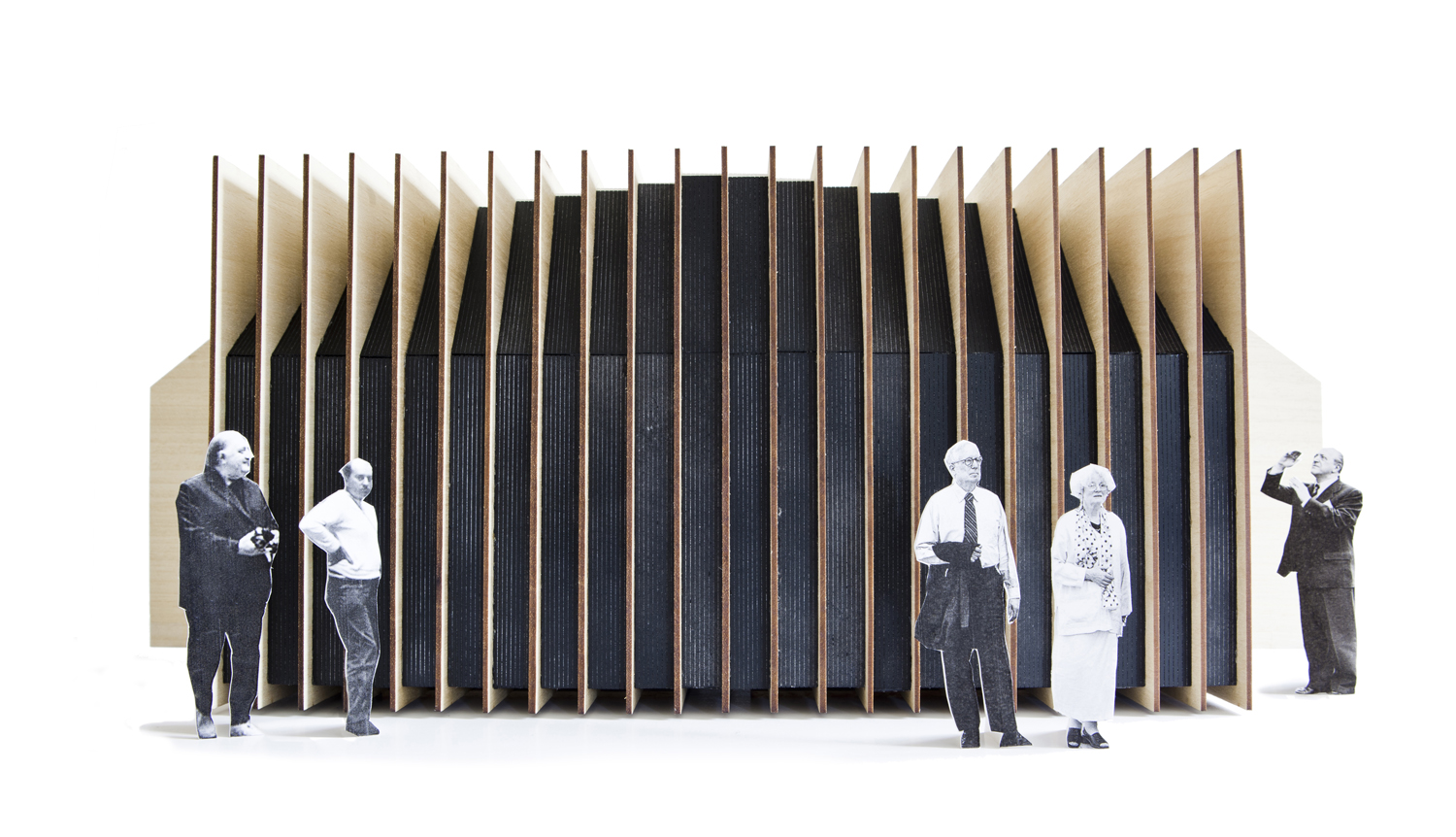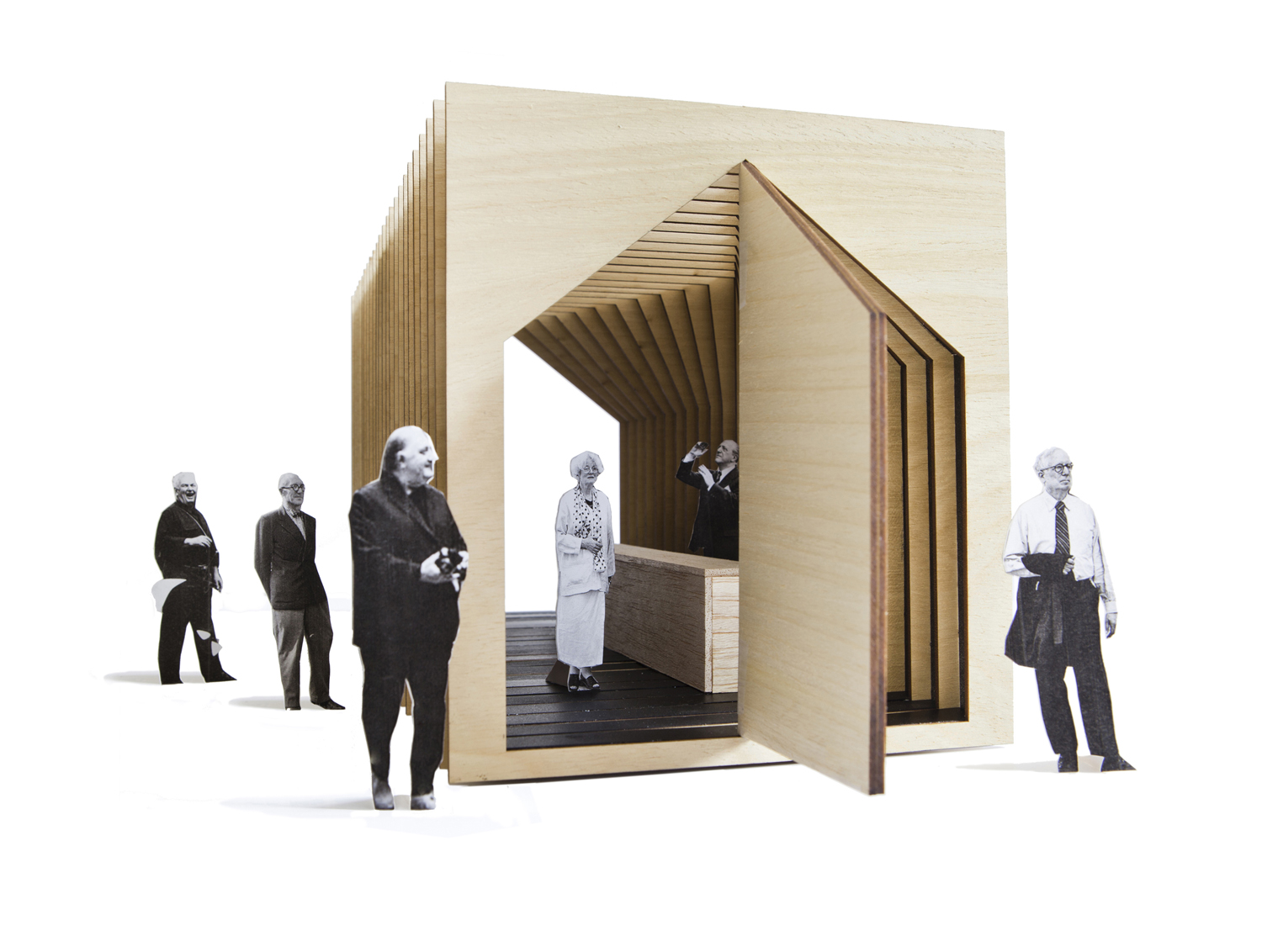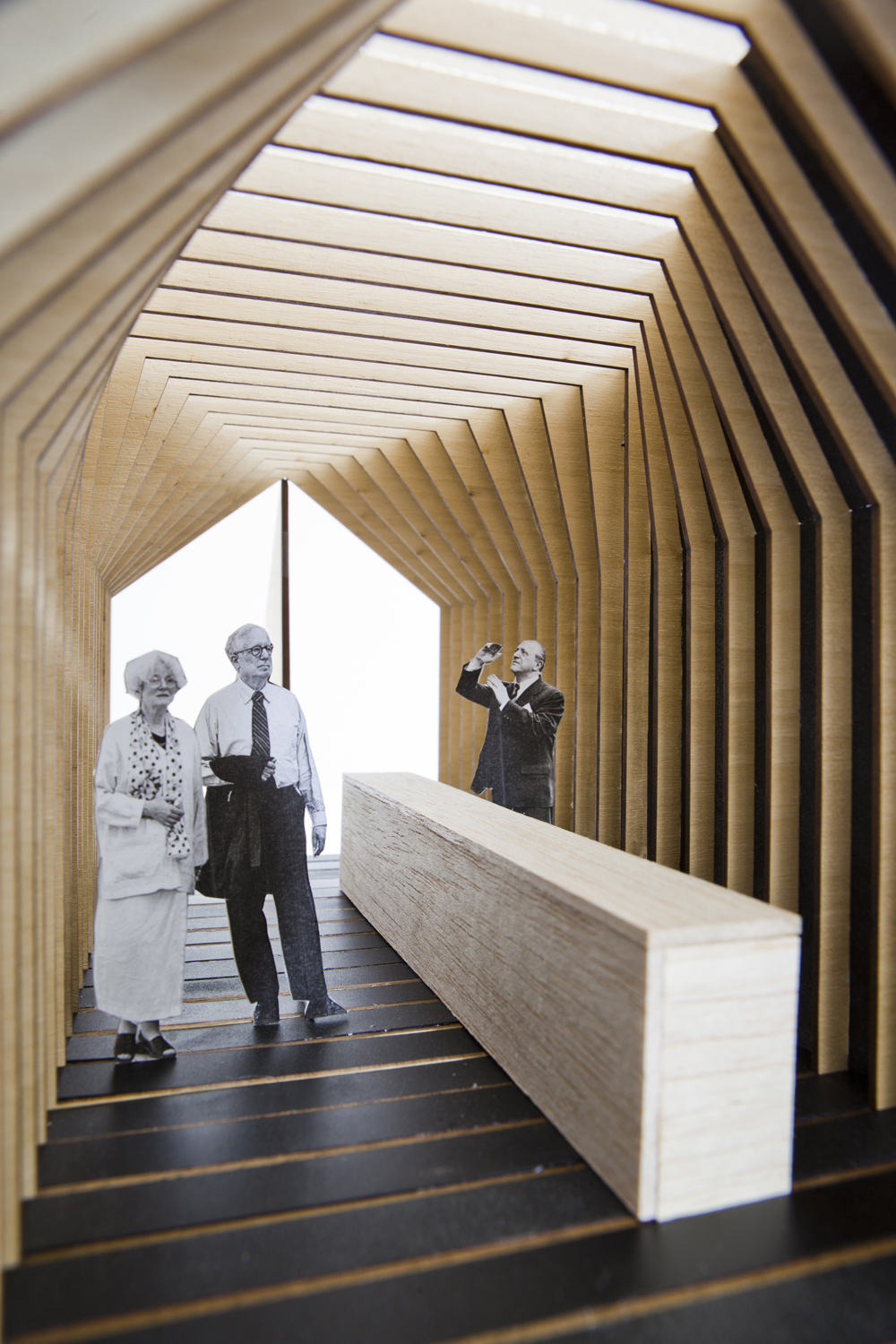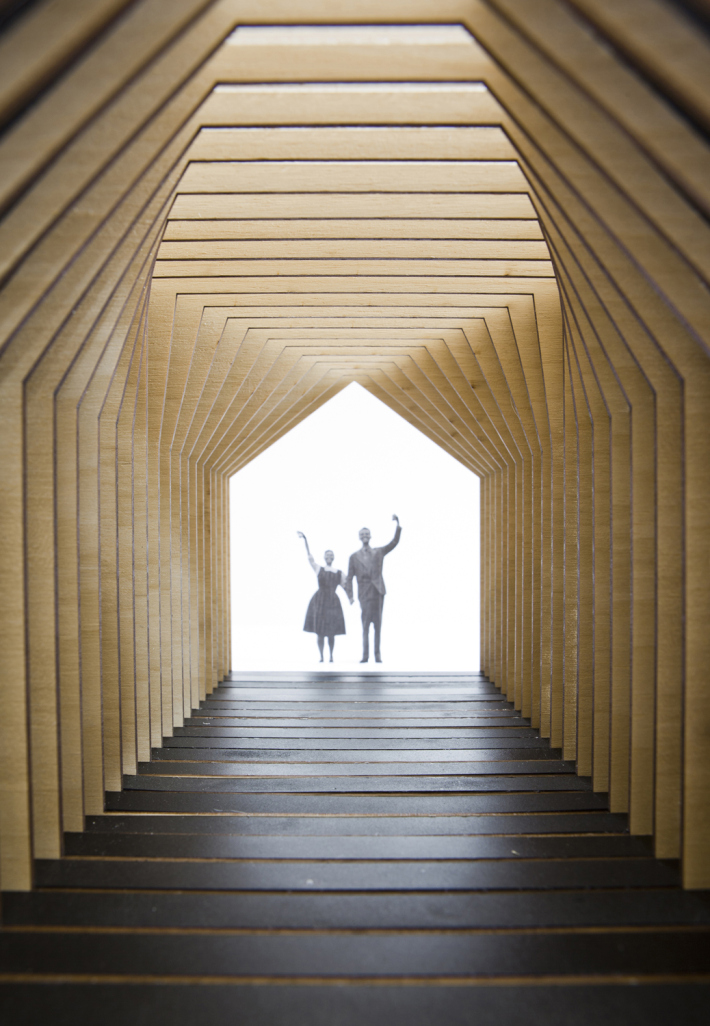1243-AEB-ORD.US-2015
Client: Unknown
Status: Competition (2015)
Location: Chicago, United States
Coordinates: 41.876871, -87.621460
Climate: Continental, Temperate
Material: Wood
Environments: Riverside, Park
Visualizer: Studio
Scale: Extrasmall
Types: Cultural, Pavilion
Our proposal triggers the imagination and rests on an illusion of familiarity. The pitched roof of a prototypical kiosk, which we all have in mind, is absent; yet it is present. We play with the image by emptying the space that would be full. On the other hand, we fill the void.
This simple strategy alters the usual inside – outside relationship and allows entering the kiosk. By doing this, many different activities can take place in the kiosk during the Chicago Architecture Biennial and when the kiosk stands at the lakefront.
Adaption
The open layout allows hosting a range of programs, such as lectures, performances, small concerts or exhibitions during the Biennial and afterwards the kiosk can be turned into a space for selling hot dogs, ice cream, coffee or flowers at the Lakefront. The plain abstraction allows the kiosk to be adapted to different locations and roles.
Approaching from the outside, people will first see a simple figure, gradually turning into repeated layers, and eventually revealing a void the shape of a typical kiosk. When entering the inviting building, visitors will experience the power of the absence and the strength of their own imagination. They will realize that the space they imagined has been inverted and that the pitched roof they expected has turned into a rising skylight that allows natural light inside, or turns the kiosk into a lantern at night.
The kiosk has been designed to function autonomously in a range of contexts, from the Millennium Park, to the sandy beaches at the Lakefront.
Repetition
The project relies on a simple repetitive construction method. A series of laminated wooden slates are set one foot apart, showing equally from the outside. Inside, a slightly different laser cut in each slate allows the pitched roof to be gradually opened, making the most use of its repetitiveness. Repetition generates structure, void, space and light. The altered sequence of slates creates an embracing interior space.
Assemblage
A concept this simple and clear is extremely easy to construct. The proposed kiosk is thought to be assembled in just a few hours, as all its different components are pre-fabricated and easily transported to the site. The design allows the assembled kiosk to be transported as well, so that dismounting and mounting is not necessary when relocating the kiosk.
For the assemblage of the whole kiosk we need just three types of components: 2 inch laser-cut laminated wood slates, 1 ½ inch recycled aluminum sandwich panels, and 1 inch transparent polycarbonate sheets. All these different units will be fabricated off site, and transported to the final location for assembly.
